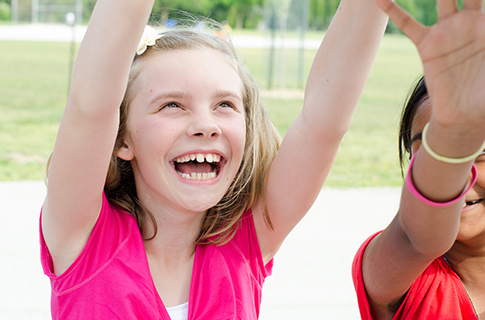Type and Purpose of Learning
In this play based physical education lesson, a myriad of aspects of play are at play! While playing parachute games, children are practicing creative learning. They are collaboratively creating shapes with the parachute, problem-solving, expressing thoughts and working together toward a common goal. Adventure and physical play-based learning are all in action as the students take risks and respond to different situations, while having fun and being physically active.





